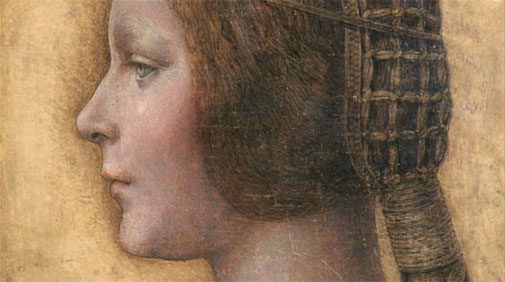
The newest installment of the PBS Nova series is the best mystery thriller I've seen on TV this year. It's got forensic scientists trying to identify partial fingerprints and examine photographic evidence, investigators traveling the globe to track down promising leads, experts adamantly offering conflicting testimony -- and enough twists and turns to satisfying the most fervent mystery fan.
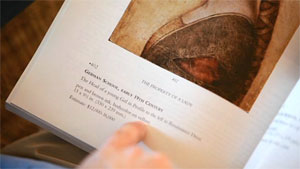
The hour, premiering Wednesday night at 9 ET on PBS (check local listings), is called Mystery of a Masterpiece. And the mystery involves a painting that is suspected by some -- but refuted by others -- to be a previously unknown work by Leonardo Da Vinci...
The unsigned work, a portrait of a pony-tailed, well-dressed woman in profile, originally was sold at auction by Christie's for $22,000. It was identified, in the program, as "German School, Early 19th Century." But one of the bidders who lost that day never forgot the painting, and when he eventually got a second chance to acquire it, he did.
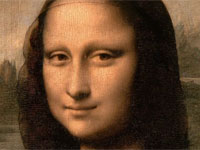
And then he began asking questions, and taking the piece to experts. Could it be, as he suspected, an unknown work by Leonardo Da Vinci?
It's an outrageous query, and an even more outrageous claim. Only a dozen or so portraits by the man who painted the Mona Lisa exist in all the museums across the world. To say that this could be another, when no historical record exists of it having been painted or previously displayed, is the longest of long shots.
But Nova is a science show, and there are ways of testing these things -- at least to eliminate the various forgeries and impossibilities. And, as Sherlock Holmes said, when you eliminate the impossible, whatever remains, however improbable, must be the truth...
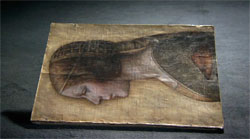
Because the canvas in question is made of vellum, which is animal skin, it can be carbon-dated, to determine whether it indeed comes from the 19th century -- which Christie's experts presumed -- or was much older. Da Vinci lived from 1452-1519, so for the mystery painting to possibly be his work, the vellum would have to be much older than the 1800s.
That test takes place in the very early portion of Mystery of a Masterpiece, so it's not spoiling much to say that the test, with "95 percent predictability," dates the canvas within the range of the years 1440 to 1650.
But that means only that the material on which the portrait was painted is old enough.
Next comes a visit with a painter who dabbles in "legal forgeries," recreating masterworks only for his own amusement. He shows how to strip the paint off an existing old canvas and start anew.
At this point, at full steam, the mystery is afoot. David Murdock, the writer-director-producer of this clear and exciting program, presents the three pivot points on which this mystery must rest.

1) Artistically, does the work measure up to, and is it consistent with, other Da Vinci paintings?
2) Scientifically, does it match what we know about the ages of not only the canvas, but the pigments and other elements?
3) Historically, is there any supporting material to put either the subject of the painting, or the painting itself, in perspective?
Tackling those three questions -- in a manner of which Dan Brown, author of The Da Vinci Code, would approve -- takes this Nova from New York to Paris, from Switzerland to Poland, and elsewhere. It's no wonder Mystery of a Masterpiece was produced in partnership with National Geographic. A lot of frequent-flyer miles were generated in the making of this program.
And every path leads to another hidden corridor, another puzzle. That's where the real fun is, so I won't give too much away -- but one delicious detail has to do with the braided ponytail sported by the woman in the portrait.
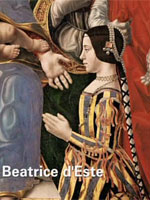
Eventually, that hairstyle is tracked down to a particular place and time -- a trendy moment of fashion that is captured in a few other period portraits, and which lasted only a decade, in Milan. Turns out it was the decade of 1482-92, and this long, tight braid fad was in style precisely when Da Vinci was living in Milan. There are even contemporary works by other painters, showing the similar ponytail, presented as evidence.
And so on. Watch the rest, and decide for yourself whether you're persuaded by the amassed evidence. One verdict, however, seems irrefutable: This Nova, in its direct and detailed manner of story-telling, is its own minor masterpiece.